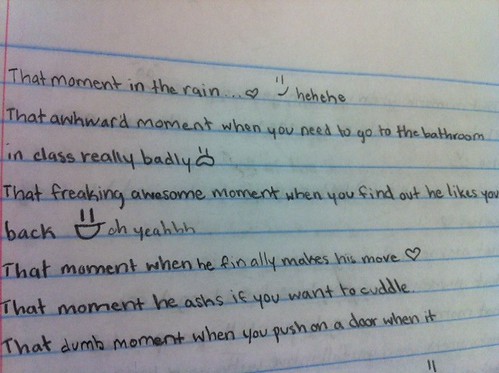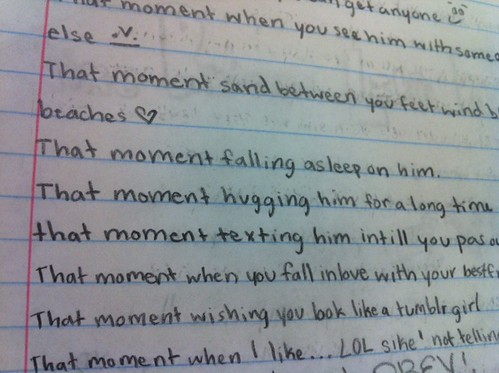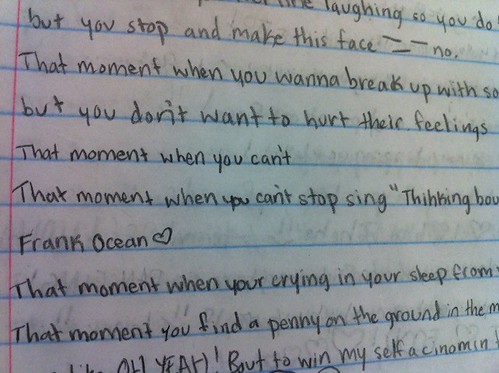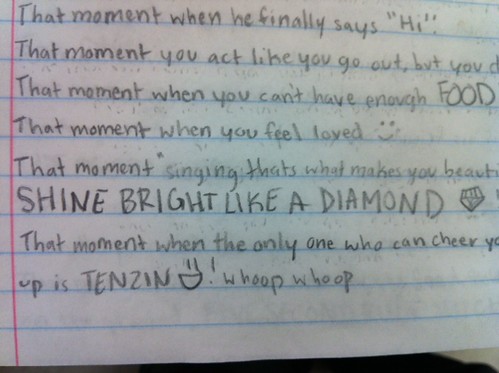There's something timeless about writing notes on loose-leaf paper and thoughtlessly or slyly passing it during instruction, hoping it makes it into the right hands. Bored or distracted - it doesn't really matter, the fact is, adolescents record every detail going on in their brain. That much hasn't changed.
I grew up in the 70's when a foldable (that fancy way of folding notebook paper with a pull-tab) was almost as important as the content itself. I wrote about my parents, songs, teachers, cute boys, and what was happening after school or on the weekend. I'd be embarrassed and amused if someone were to scrounge up an old note written by me. I mean seriously, that's what middle schoolers do - they dump their every last thought onto a piece of paper for someone else to read.
Nowadays, notes still have some timeless qualities: written on crumpled up looseleaf paper with intimate details passed during the most inappropriate times. As some things stay the same, there have been noticeable changes too. I'm now collecting whole notebooks, and instead of writing out of boredom, student notes are dotted with angst and cynicism. There's a lot more graphic thoughts about sex and love, too. And recently, I collected a "That Moment . . . " notebook, which is what I want to share here - a snapshot of one 12-year-old's mind fresh off her desk during academic instruction.
See for yourself how times have changed.







